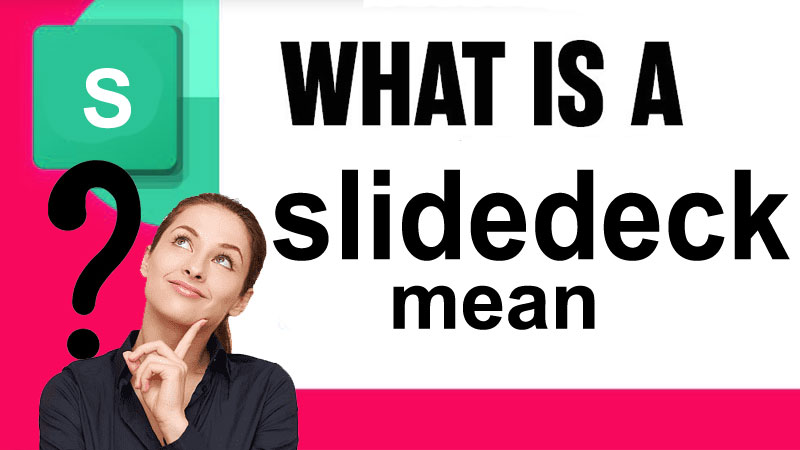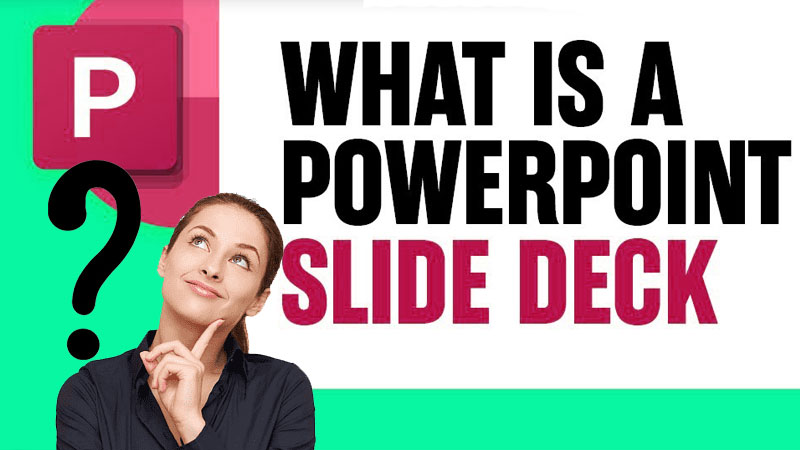Slidedick: A Powerful Tool for Engaging Presentations
Hello reader! If you’re looking for a way to take your presentations to the next level look no further. Today we are going to consider a powerful tool for creating exciting presentations-slidedeck.
A slide deck is an effective means of conveying information using visual elements and textual materials. This provides an opportunity to create a professional presentation which makes them effective means of communication.
The history of slide decks
The history of slidedecks spans decades of evolution from old transparent slides to modern technological solutions. The impact of technology on the creation of slide decks is impressive, making them more accessible and creative.
Elements of an effective slideshow
For your slideshow to be successful, it’s important to consider visual appeal, clarity of text, and the correct use of fonts and colors.
Tips for creating an outstanding slideshow
Planning, consideration of structure, the use of data and statistics, and the use of multimedia help to create an outstanding presentation.
Common Mistakes to Avoid
Overcrowded slides, too much text, and ignoring design principles can affect the quality of your slideshow.
Tools for creating slideshows
PowerPoint, Google Slides and Keynote are popular tools for creating slide decks that let you express your creativity.
How to make an effective presentation using a slide deck
Conducting rehearsals, interacting with the audience and skillfully answering questions are key aspects of A successful presentation.
The role of slideshow in digital marketing
Slideshows are effectively used in social networks webinars and e-mails contributing to the improvement of marketing strategies.
Trends in the design of slide decks
Minimalistic design, interactive elements and the integration of artificial intelligence are modern trends in the design of slide decks.
Cases of successful presentations using slides
Consider corporate presentations, educational materials, and sales pitches to learn the secrets of success.
Prospects for slide decks in the future
With the advancement of technology, integration with virtual reality and increased accessibility, slide decks have a bright future.
Conclusion
Let’s summarize the key points: slide decks are not only a tool but also an opportunity to make your presentations unparalleled.
Frequently asked questions
What does slide deck mean? Understanding the Power of Visual Communication

Answer slidedeck
In the fast-paced world of presentations and information sharing the term slide deck has become ubiquitous.
A slide deck essentially a series of slides containing visual and textual content, is a powerful tool used for various purposes.
Let’s delve into the intricacies of slide decks, exploring their meaning differences from Power Point, applications in teaching and the diverse user base.
Distinguishing PowerPoint and Slide Deck
Features of Power Point
Microsoft Power Point is a widely known presentation software but what sets it apart from a slidedeck?
Power Point often refers to the software itself, while a slide deck encompasses the entire presentation, inclusive of slides, visuals, and narratives.
Characteristics of SlideDecks
A slidedeck on the other hand is a comprehensive term for a presentation that can be created using various software not limited to Power Point.
It emphasizes a cohesive and visually engaging set of slides that convey a message or information effectively.
The Evolution of Slide Decks
Historical Perspective
Slidedecks have come a long way from traditional overhead projectors. Initially, they were simple visual aids. Now they incorporate multimedia elements animations and dynamic content.
Modern Trends
Today, with advancements in technology slide decks have evolved into dynamic and interactive presentations adapting to the changing needs of the audience.
Slide Decks in Teaching
Integration in Education
Educators have embraced slide decks as invaluable tools for delivering lessons. The visual appeal and organization of information help students grasp complex concepts more effectively.
Benefits for Students and Teachers
Slide decks facilitate interactive learning, allowing teachers to incorporate images videos, and diagrams. For students it provides a structured resource for reviewing and understanding the material.
Key Elements of an Effective Slide Deck
Visual Appeal
Creating visually appealing slides is crucial. Utilize consistent themes high-quality images, and a balanced mix of colors to capture and maintain audience attention.
Concise Text
Avoid information overload. Each slide should convey a key point concisely, promoting a clearer understanding of the content.
Engaging Multimedia
Incorporating multimedia elements like videos and interactive graphics enhances engagement and reinforces key messages.
Who Uses SlideDecks?
Business Professionals
In the corporate world slide decks are indispensable for presentations pitches, and reports. They provide a structured format for conveying information to clients investors and colleagues.
Educators
Teachers across disciplines use slide decks to supplement their lectures making complex topics more accessible and engaging for students.
Public Speakers
From TED Talks to conferences, public speakers leverage slide decks to enhance their verbal communication, creating a multi-sensory experience for the audience.
Slide Deck Best Practices
Consistent Design
Maintain a cohesive design throughout the presentation. Consistency in fonts, colors, and layouts contributes to a polished and professional look.
Limiting Bullet Points
Minimize the use of bullet points. Instead use visuals and concise text to convey information keeping the audience focused on key messages.
Utilizing White Space
White space is essential for preventing visual clutter. It allows the audience to absorb information without feeling overwhelmed.
Common Mistakes to Avoid in Slide Decks
Information Overload
Too much information on a single slide can overwhelm the audience. Focus on key points and use additional slides for detailed explanations.
Poor Design Choices
Clashing colors, unreadable fonts, and excessive animations can detract from the message. Opt for a clean and professional design.
Lack of Rehearsal
Presenters often neglect rehearsal, leading to awkward pauses and stumbling. Practice ensures a smooth delivery and confidence in conveying the content.
Slide Decks in the Digital Age
Online Platforms
Digital platforms like Google Slides and Prezi have revolutionized slide deck creation offering collaborative features and cloud-based accessibility.
Collaborative Features
Teams can collaborate in real-time on slide decks, fostering seamless teamwork and ensuring a polished final product.
Effectiveness in Communication
Impact on Audience
Well-crafted slidedecks enhance the impact of a presentation, helping the audience retain and understand information more effectively.
Enhancing Message Delivery
Visual aids complement verbal communication, reinforcing key points and creating a more memorable experience for the audience.
Slide Decks in Virtual Presentations
Tips for Virtual Engagement
In virtual settings, maintaining audience engagement is crucial. Incorporate interactive elements, encourage participation, and use visually appealing slides to keep viewers attentive.
Overcoming Challenges
Virtual presentations pose challenges such as technical issues and potential distractions. A well-designed slide deck can help mitigate these challenges.
Accessibility Considerations in SlideDecks
Inclusivity in Design
Design slides with accessibility in mind, ensuring that individuals with disabilities can fully engage with the content through screen readers and other assistive technologies.
Catering to Diverse Audiences
Consider the diverse backgrounds and preferences of your audience. A thoughtful and inclusive design ensures that your message reaches everyone.
Future Trends in Slide Deck Design
AI Integration
The integration of artificial intelligence in slidedeck creation is on the horizon. AI
What is the difference between a PowerPoint and a slidedeck?

Introduction
Creating effective presentations is an art and understanding the distinction between a Power Point and a slide deck is crucial.
In this article we delve deep into the features applications and advantages of both providing valuable insights for anyone aiming to enhance their presentation skills.
Key Differentiators
| Heading | Sub-heading |
|---|---|
| PowerPoint vs. Slide Deck | Understanding the Fundamental Differences |
| Visual Appeal | Elevating Presentation Aesthetics |
| Functionality | Exploring Features and Capabilities |
| User-Friendliness | Navigating the Interface with Ease |
| Collaboration | Fostering Teamwork in Presentation Creation |
| Accessibility | Ensuring Reach to a Diverse Audience |
Visual Appeal
Crafting visually engaging presentations is paramount.
With Power Point users benefit from a wide array of design tools templates and multimedia integration, enhancing the overall visual appeal.
In contrast a slidedeck may lack the sophisticated design options but offers flexibility making it suitable for various purposes.
Functionality
Understanding the functionalities of both tools is crucial for effective presentations.
Power Point stands out with its advanced features animations and transitions providing a dynamic presentation experience.
Meanwhile, a slide deck might have fewer bells and whistles but excels in simplicity and quick creation.
User-Friendliness
Navigating the interface is a pivotal aspect, especially for users with varying levels of technical expertise.
PowerPoint boasts a user_friendly interface with intuitive controls suitable for beginners and experts alike.
Conversely, a slide deck is often appreciated for its simplicity, catering to those who prefer a straightforward approach.
Collaboration
Collaboration is increasingly important in today’s interconnected world. Power Point facilitates seamless collaboration through cloud-based services allowing multiple users to work on a presentation simultaneously.
A slidedeck, while lacking some collaborative features, remains a versatile choice for solo or small team projects.
Accessibility
Ensuring that presentations reach a diverse audience is a key consideration. Power Point presentations are widely compatible, easily accessible on various devices and platforms.
On the contrary, a slide deck might require specific software for optimal viewing, potentially limiting accessibility.
FAQs
Is PowerPoint the only software for creating presentations?
While Power Point is a popular choice several alternatives including Google Slides and Keynote offer similar functionalities.The choice depends on individual preferences and specific requirements.
Can a slidedeck be as visually appealing as a PowerPoint presentation?
Absolutely! While Power Point provides extensive design tools, a well-crafted slidedeck using other software can be visually appealing with creativity and thoughtful design choices.
Are collaborative features essential for presentations?
Collaborative features enhance teamwork making Power Point a preferable choice for collaborative projects.However, a slidedeck can still be effective for solo or small team endeavors.
Which tool is better for quick presentations?
For quick presentations, a slidedeck might be the preferred choice due to its simplicity and ease of creation. PowerPoint, with its advanced features, is ideal for more intricate presentations.
Can a slide deck created in one software be opened in another?
Compatibility varies, but most software allows exporting slides in universally compatible formats like PDF. However, some advanced features may not translate perfectly.
How does accessibility differ between PowerPoint and slide decks?
Power Point presentations have broader accessibility due to their compatibility across devices and platforms. A slide deck may require specific software, potentially limiting accessibility.
Conclusion
In conclusion, the choice between Power Point and a slidedeck depends on individual preferences project requirements and collaboration needs.
Both tools have their unique strengths and understanding the differences empowers presenters to create impactful and effective presentations.





